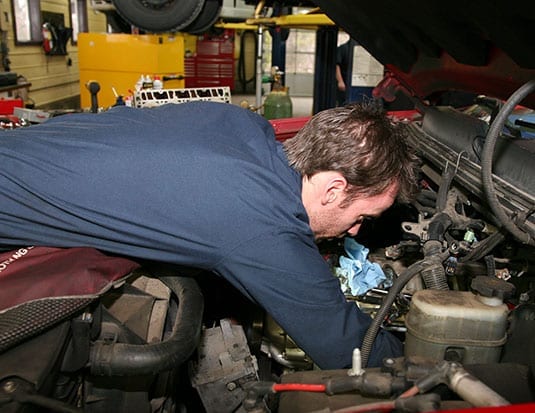New or different ways of looking at things get me excited.
Every once in a while someone will say something that makes me look at a situation from a completely different angle. My current insight came from hearing the story of a group of successful business people who started, built up, and sold several very profitable businesses. They decided to buy several repair shops as their next business investment. Within six months all of the shops were almost broke. What was it that a group of smart business people had missed? All of their other businesses involved selling things. They went into the automotive business to sell things like oil changes, brake jobs and mechanical repairs.
We perform maintenance services. We inspect, diagnose and repair vehicles. But what we sell is time.
55 percent
The independent automotive industry only collects revenue for 55 percent of the hours we pay our technicians—referred to as your “effective labour rate.” If we use an average labour rate of $100 per hour that means that on average we collect $55 an hour for each hour our technicians are available. When a parts store doesn’t sell all the parts on the shelf, the parts still remain in inventory. When a tire wholesaler doesn’t sell all their tires, those tires are still in the warehouse. When we don’t sell all of the hours we’ve paid for, they disappear, one second at a time, never to be sold again. These facts are old news to some of you; my new insight was that it’s not just technicians turned shop owners that have a tough time making good profits. Even experienced, successful business people have a tough time when it comes to operating an automotive shop.
The big shift has to be in understanding what we sell. We perform maintenance services. We inspect, diagnose and repair vehicles. But what we sell is time. It also occurred to me that other businesses that sell time as well seem to usually be very profitable. What came to mind were plumbers, electricians, accountants, engineers, doctors, dentists, and lawyers. These trades and professions charge for every hour they work. In fact, plumbing and electrical firms charge for the time it takes to drive to where they perform their services. Dentists and doctors charge us if we miss an appointment. Just as a note, most electricians and plumbers get paid more per hour than most automotive technicians. Yet the labour rates charged by these businesses are usually lower than those of automotive shops in their same markets. How is this possible?
Time and knowledge
Here’s the big difference between them and us—all of the businesses that I listed have one thing in common: they primarily only have two things they sell and those are time and knowledge. Plumbers and electricians charge for materials but aren’t really a profit centre, the way parts are for an automotive shop. In order to be profitable, all of these other businesses figured out that they had to charge for all of their time, all of the time! Our business had a different history. As our industry evolved, the most common things we sold were either cars—as new car dealers—or fuel as service station operators. In both cases, repair vehicles and selling parts was almost a sideline. Now that labour (time) is our main revenue stream, we need to rethink how we run our businesses.



